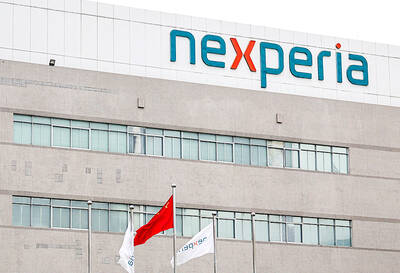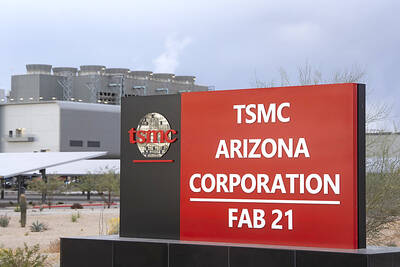Japanese consumer inflation rose 1.2 percent last month, its fastest pace in five years, edging closer to the central bank’s 2 percent target in its war on deflation as Tokyo battles to reverse years of falling prices.
Stripping out volatile food and energy prices, which have largely driven recent increases, prices inched up 0.6 percent in November, the country’s best result since August 1998.
The broader consumer price index, which measures a basket of everyday goods but excludes the cost of fresh food, rose 1.2 percent last month from a year earlier, the fastest pace in five years.

Photo: Reuters
Japanese Prime Minister Shinzo Abe’s government has put conquering deflation and stoking growth in the world’s third-largest economy at the top of its agenda with a policy blitz dubbed “Abenomics.”
The upbeat headline for yesterday’s inflation data was tempered by the fact that prices were still largely driven up by higher fuel bills, not surging demand for everyday goods such as vacuum cleaners and clothes which power the economy as a whole.
Electricity bills jumped a hefty 8.2 percent, the data showed, as Japan’s energy costs soar in the wake of the 2011 Fukushima atomic disaster, which forced the shutdown of the nation’s nuclear reactors.
Since the accident, Japan has been importing fossil fuels to plug the energy gap, a pricey option that has become even more expensive as the yen sharply weakened in the wake of the Bank of Japan’s unprecedented monetary easing drive.
Yesterday’s data showed prices moving towards the Bank of Japan’s ambitious 2 percent inflation target — to be reached in just two years.
While deflation may sound like a good thing for shoppers, it can be bad for growth because falling prices encourage consumers to put off spending, knowing they will pay less for a product if they wait.
That makes it difficult for companies to invest and discourages them from hiking wages, which, in turn, reduces consumer spending further.
Despite Abe’s much-lauded start since sweeping national elections a year ago, analysts have been warning that Tokyo’s bold pro-growth program — a mix of big government spending and central bank monetary easing — is not enough on its own without promised economic reforms.
And getting Japan’s notoriously thrifty households to spend more is a key part of Abe’s drive, as are yet-to-be-seen widespread wage rises.
That was in evidence yesterday with separate data showing Japan’s household spending inched up 0.2 percent in November, well below market expectations, as consumers get ready for a sales tax hike next year.
The rate rise in April — to 8.0 percent from 5.0 percent — is seen as crucial for shrinking Japan’s mammoth national debt, proportionately the worst among wealthy nations.
However there are fears it will derail a budding economic recovery by taking a bite out of consumer spending.
Japan’s factory output, meanwhile, expanded by a weaker-than-expected 0.1 percent in November, while the unemployment rate held steady at 4.0 percent.

JITTERS: Nexperia has a 20 percent market share for chips powering simpler features such as window controls, and changing supply chains could take years European carmakers are looking into ways to scratch components made with parts from China, spooked by deepening geopolitical spats playing out through chipmaker Nexperia BV and Beijing’s export controls on rare earths. To protect operations from trade ructions, several automakers are pushing major suppliers to find permanent alternatives to Chinese semiconductors, people familiar with the matter said. The industry is considering broader changes to its supply chain to adapt to shifting geopolitics, Europe’s main suppliers lobby CLEPA head Matthias Zink said. “We had some indications already — questions like: ‘How can you supply me without this dependency on China?’” Zink, who also

The number of Taiwanese working in the US rose to a record high of 137,000 last year, driven largely by Taiwan Semiconductor Manufacturing Co’s (TSMC, 台積電) rapid overseas expansion, according to government data released yesterday. A total of 666,000 Taiwanese nationals were employed abroad last year, an increase of 45,000 from 2023 and the highest level since the COVID-19 pandemic, data from the Directorate-General of Budget, Accounting and Statistics (DGBAS) showed. Overseas employment had steadily increased between 2009 and 2019, peaking at 739,000, before plunging to 319,000 in 2021 amid US-China trade tensions, global supply chain shifts, reshoring by Taiwanese companies and

Taiwan Semiconductor Manufacturing Co (TSMC, 台積電) received about NT$147 billion (US$4.71 billion) in subsidies from the US, Japanese, German and Chinese governments over the past two years for its global expansion. Financial data compiled by the world’s largest contract chipmaker showed the company secured NT$4.77 billion in subsidies from the governments in the third quarter, bringing the total for the first three quarters of the year to about NT$71.9 billion. Along with the NT$75.16 billion in financial aid TSMC received last year, the chipmaker obtained NT$147 billion in subsidies in almost two years, the data showed. The subsidies received by its subsidiaries —

At least US$50 million for the freedom of an Emirati sheikh: That is the king’s ransom paid two weeks ago to militants linked to al-Qaeda who are pushing to topple the Malian government and impose Islamic law. Alongside a crippling fuel blockade, the Group for the Support of Islam and Muslims (JNIM) has made kidnapping wealthy foreigners for a ransom a pillar of its strategy of “economic jihad.” Its goal: Oust the junta, which has struggled to contain Mali’s decade-long insurgency since taking power following back-to-back coups in 2020 and 2021, by scaring away investors and paralyzing the west African country’s economy.